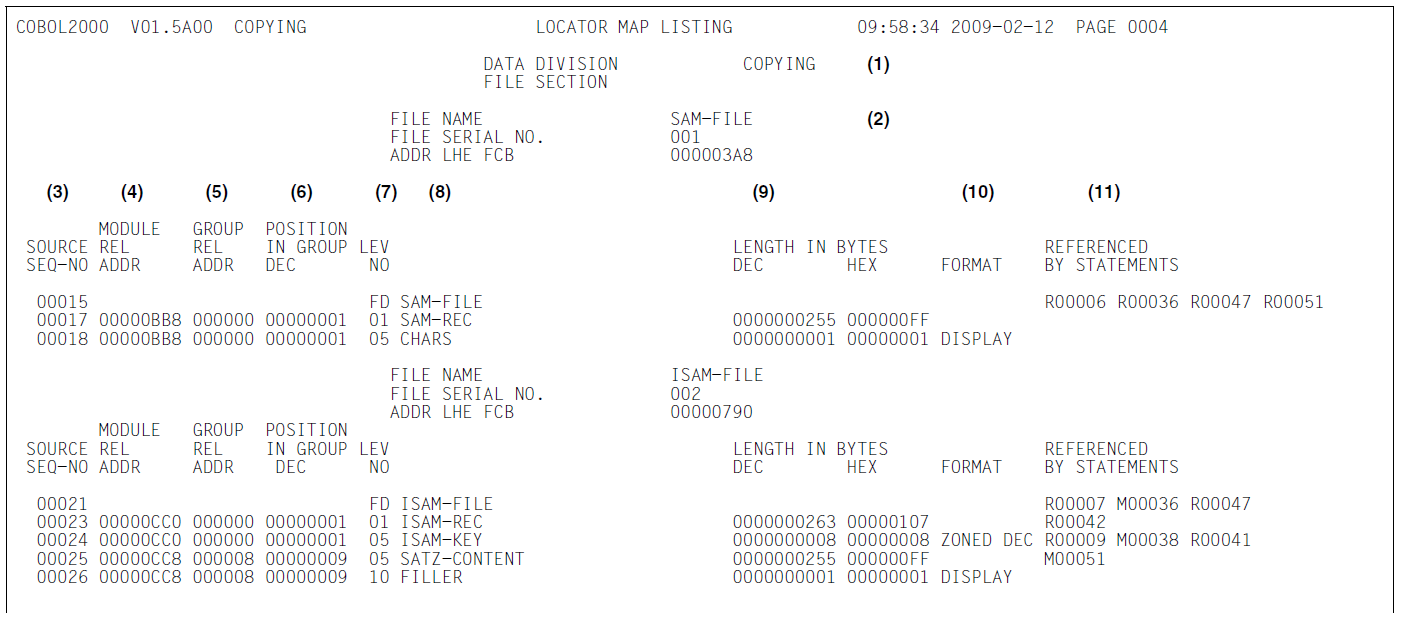(1) | Specification of program division, section and program name. | ||||||
(2) | File name, file sequence number and address of file control block of all files used in the program. | ||||||
(3) | SOURCE SEQ NO | ||||||
(4) | MODULE REL ADDR | ||||||
(5) | GROUP REL ADDR | ||||||
(6) | POSITION IN GROUP DEC | ||||||
(7) | LEV NO | ||||||
(8) | contains the data-name defined by the user. | ||||||
(9) | LENGTH IN BYTES | ||||||
(10) | FORMAT | ||||||
(11) | REFERENCED BY STATEMENTS The type of reference appears in front of the line number:
The corresponding lowercase letters indicate implicit accesses (this affects corresponding subordinate fields with MOVE CORRESPONDING, for example, or the data item referred to by a condition name). | ||||||
(12) | LVL | ||||||
(13) | SOURCE UNIT NAME / SECTION NAME / PARAGRAPH NAME |



